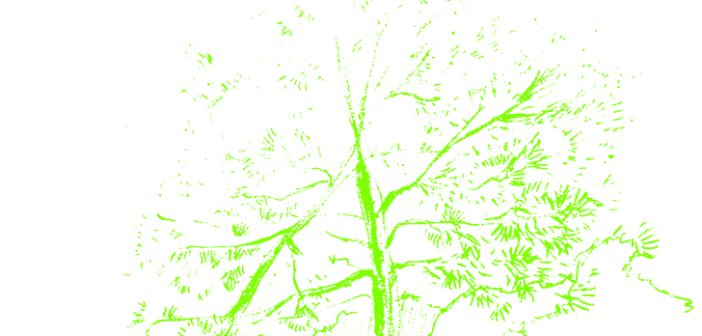Hasn’t 2020 been stressful? Your trees may also be a little stressed right now, just for different reasons, of course. Since trees can’t tell us what is bothering them, we need to look for the signals they offer. Sometimes these signals are obvious, but oftentimes trees give us only very subtle signals. So eye your trees carefully.
Practicing good arboriculture will promote healthy and vigorous trees. Healthy trees are better suited to withstanding environmental or usage stressors. Remember, our adventure activities are new for trees, and are a source of stress.
Canopy tour and adventure park guides have a unique opportunity to observe trees very closely. They get to visit the trees in all conditions—early mornings when nature is uninterrupted by human activity, midday when the trees are crawling with guests, and in every type of weather Ma Nature can muster. While guides’ first responsibility is guest safety, keeping one eye on the trees whenever possible will benefit the entire operation.
Here we outline some specific stress indicators guides—and other employees—can look for. However, sometimes simply noticing something has changed from the last time we looked at a tree is more important than looking for or noticing a specific symptom.
To start, staff should observe trees in three areas as they look for stress signals: the soil, the trunk, and the canopy (limbs, branches, and leaves). Each area shows stress differently.
Potential Stressors, Generally
Have a good understanding of the kind of weather your trees are experiencing. Is your park having a single season drought or a multi-year drought? Has this year been exceptionally hot, cold, or wet? Was there a hard freeze after your trees flowered or budded? All are stressors.
It’s a good idea to keep a daily weather journal for your park. Weather is very local—one valley can get a completely different amount of rain than the overall region or even the valley next door, for example. Looking back at your weather journal will help you understand if weather conditions are impacting your trees.
In addition to weather, there are other general stressors to consider: Is there an invasive species moving through your region? Are there insects that your trees are a host to? Was a harmful herbicide spilled upstream from your park, or did a nearby farm fertilize its crops improperly, causing your trees to be over-fertilized? All these conditions are important because, like us, trees that have multiple stressors are more likely to struggle or succumb to disease.
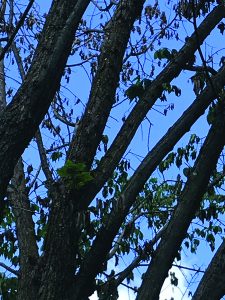
The wilted leaves shown here show signs of scale insect damage. Upon investigation, the cambium layer of the affected branches was alive. This tree was treated with an insecticide and recovered.
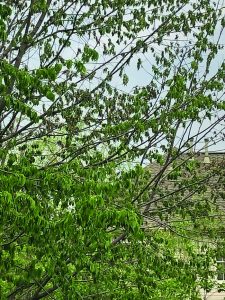
Soil
The soil is a good place to begin looking for signs of stress. Guides are often assigned to patrol an area of the adventure park from the ground. In times when guests are not requiring all of a guide’s attention, he or she should keep an eye out for signs of stress.
Deep cracked soil is a signal that the area is in drought and the trees are in need of water. Watering a forest may seem to be an exhaustive measure. However, there are techniques to water only the trees associated with the adventure activity, or only trees that are signaling the lack of water is affecting their health and vigor.
Fungi on the soil around a tree can also be an indication of stress, as can standing water in areas that are typically dry. Trees can drown if they are too wet.
Canopy
Signs of loss of health and/or vigor can include discolored leaves or wilting leaves in the canopy of the tree. Changes in leaf color or appearance are often associated with either too much or too little water. That said, other stressors—including insects, fungus, too much sun, and bacteria—can cause a tree’s leaves to change color, develop spots, appear scorched, be smaller than normal, or become brown and brittle.
Keep an eye on the tree canopy as the summer season changes to autumn. A tree or trees that are changing color or dropping leaves earlier than other trees of the same species in the area is a sure signal of stress. Premature fall coloring or leaf drop can be an indication of stressors including water, mineral or nutrient deficiency, pest, disease, compacted soil, or root restriction. Trees can also drop a few of their leaves prematurely because they have made too many and need to reduce the number of leaves in the canopy.
It is important to notice these changes in your trees and investigate what is causing the change. A skilled arborist or naturalist can help uncover these causes and offer solutions. Your state’s agriculture department may also have online resources to help diagnose leaf changes.
Another stressor in the canopy is damage. Breaks, splits, or cracks to limbs and branches, regardless of the cause, force a tree to expend resources to repair those defects. It is good practice to clean up larger broken or torn limbs with good pruning.
The proper way to prune trees is the three-cut method:
1. Cut one is an undercut on the bottom of the limb.
2. Cut two is on the top of the limb, outside of, or up from, cut one.
3. Cut three is between cut one and the branch collar of the limb, to tidy up the previous two cuts.
Trunk
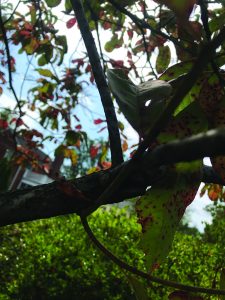
Spots on trees, such as this fungal leaf spot, can indicate many possible stresses. The stresses can range in severity, so it is wise to consult an arborist if a tree has abnormal spots on its leaves.
Similar to broken or torn limbs, damage to the trunk will force the tree to send resources to the damage and away from life-sustaining activities. Examples of these stressors include bark damage from guests, bark damage from course equipment rubbing the tree, machinery striking the tree, and construction. Lawnmowers and string trimmers can also cause damage to roots and trunks.
Limit these stressors by practicing good construction techniques, limiting how course equipment contacts the trees, and preventing machinery from striking the trunk or roots. Mulching around a tree to protect its bark and roots is a good practice.
After damage occurs, it is important to monitor wounds to confirm the tree is producing reaction wood around the injury. Reaction wood is necessary for the tree to compartmentalize an injury. Compartmentalizing the wound will limit the spread of decay. Healthy trees will compartmentalize injury and decay effectively. However, older or stressed trees will struggle to complete this process.
Fungus Amongus
Fungi can appear in all three areas of a tree: the canopy, the trunk, and the soil. It is important for guides to pay attention to fungi when they notice it, because most fungi are only visible for short periods of time. The fruiting body that is visible is the predominant indicator that fungus is present in a tree. Take note of its appearance when you see it, because it may not be there when an arborist visits the park to assess the trees.
Not all fungi are harmful to your trees, though, so it’s important to identify the fungus before making any assumptions. It is also important to consider the tree as a whole. The presence of a detrimental fungus does not necessarily mean a tree is in immediate danger.
For example, Grifola frondosa, or “hen of the woods” mushroom, is a fungus that causes rot in oak species. The presence of G. frondosa alone is not enough to condemn a tree, but it is an indication the tree is stressed. The tree may eventually die, but trees with this fungus often live many years after the first signs appear.
Other Conditions

Bacterial wet wood or slime flux may indicate internal rot in trees. It can be seen oozing from wounds in the tree, such as the entry point of course hardware, and it can smell unpleasant.
There are also a few conditions that appear unsightly but are not always harmful to a tree. Small bumps on leaves or twigs, called “galls,” are typically caused by the tree reacting to insect eggs. Gall size can vary from as small as a pencil eraser to as large as a golf ball or even a grapefruit. Galls in small numbers are not harmful to healthy trees.
Another common condition that similarly affects trees is burls. There is no known cause for burls. Trees with burls should be monitored, because burls can limit lifespan and health of trees. Building in trees with burls is not recommended for this reason.
Lichen and moss are often present in trees and not harmful. Smooth patches on the bark are often caused by a fungus living in the bark. The smooth patch is the result of the bark dying and new bark growing. These smooth patches are not harmful to the tree.
Conditions referred to as “wet wood” are unsightly—and often smelly—but are not necessarily harmful to a tree. Wet wood refers to situations in which a liquid leaks from a wound in the tree. The liquid is often discolored, and can have various odors.
While some wet wood is infected with bacteria, the major concern is the loss of structural material caused by decay. The liquid leaking from the tree can kill grass or other plants because of the alcohol, acid, or salt present. The liquid will also stain course platforms.
Watch and Learn
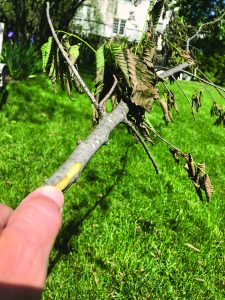
A variety of insect infestations can result in defoliation. The wilting leaves in this photo are caused by scale insects feeding on the twigs.
Trees are very resilient organisms. We are just now beginning to learn about them as a whole. Overall, we really know very little about them.
More importantly, we have only just begun to study how using trees for recreation affects them. Therefore, it is good practice for adventure park and canopy tour guides to always keep one eye on the trees, looking for subtle and not so subtle indicators of a tree’s health.
So, examine a tree’s bark, and make sure it is a consistent color and intact. Watch the leaves for changes. Look out for fungi growing around or from trees. Watch for and then clean up any damage to limbs, branches, bark, or roots. It is also good practice to communicate with an arborist or other tree care professional when guides or operators see something out of the ordinary. All these observations and reactions will certainly help trees to stay healthy and strong.
Trees are a huge part of the infrastructure of many adventure parks and canopy tours. The trees are also a significant draw for guests looking to connect with the natural world, especially as we all step out after the COVID-19 pandemic. So, take some time each day to stop and notice the trees. Your guests, your park, and your trees will thank you.


